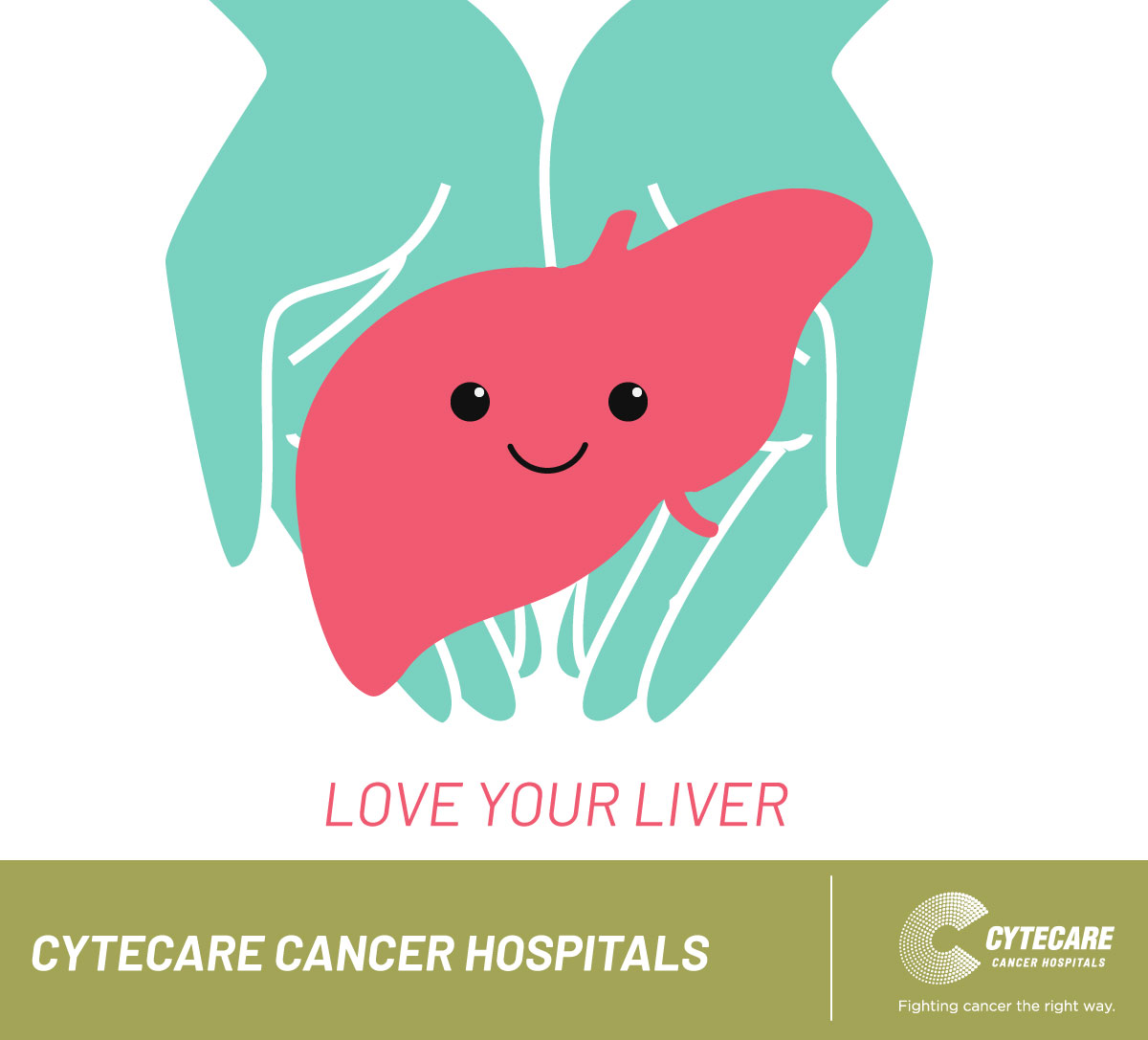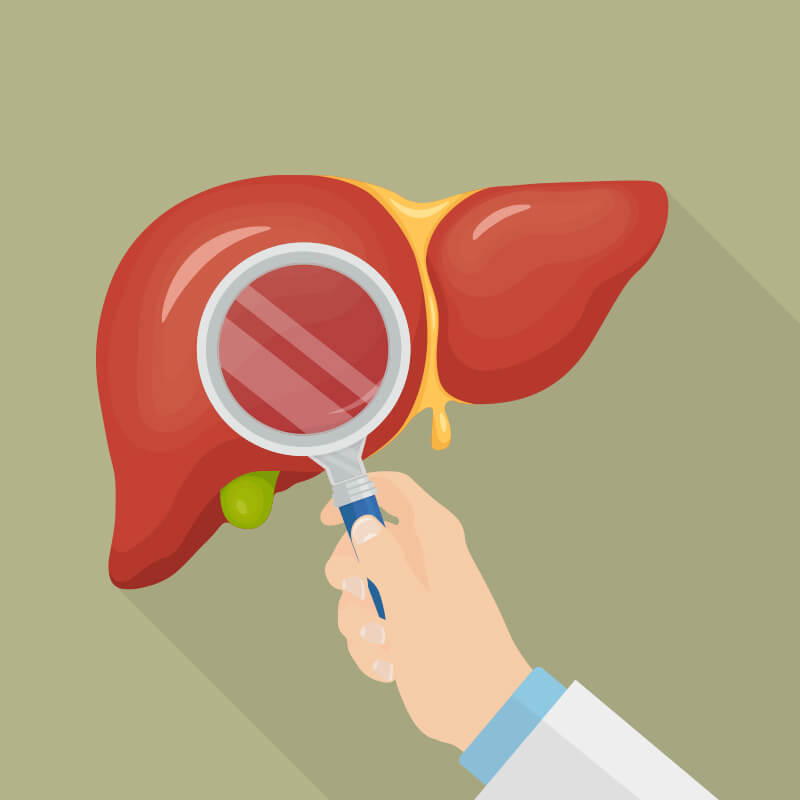The liver is one of the largest and most complex organs located below the right lung. It is known to perform over 500 different functions including the synthesis of proteins, hormones, blood glucose regulation, bile secretion, breakdown of toxins, aiding in blood clot formation, fighting infections, etc. It is a remarkable organ capable of complete regeneration, even when 80% of the liver has been removed.
Types of liver cancer
Primary liver cancers originate in the liver. However, cancers of other organs such as colorectal cancer, pancreatic cancer, prostate cancer and lung cancer may metastasize to the liver. They are termed secondary liver cancer. The primary type depends on the type of hepatic cell it originates from. Among primary liver cancers, hepatocellular carcinoma (HCC) is the most common cancer and constitutes about 90% of all cancers of the liver globally.
Epidemiological data suggest that liver cancer (Hepatocellular carcinoma- HCC) is the 5th most common cancer. Liver cirrhosis presents the highest risk of developing primary liver cancer. About 80% of liver cancer (Hepatocellular carcinoma- HCC) has been found in liver cirrhosis cases.
Epidemiological data (USA) suggest that the aetiology of cirrhosis and liver cancer is found to be hepatitis C infection in 30-50% of cases; alcohol-related liver disease in 10-20% of cases and hepatitis B infection in 10-15% of cases. Data from tertiary care centers in India indicate that about 70-97% of patients with HCC, were diagnosed with underlying cirrhosis of the liver.
Liver cancer is also known as hepatic cancer can be asymptomatic until it has advanced or the tumor causes a blockage to major blood vessels or bile ducts. Some of the signs and symptoms of liver cancer (Hepatocellular carcinoma- HCC) include jaundice, right quadrant abdominal pain, back pain, unexplained weight loss, hepatomegaly (enlarged liver), fatigue, Itching, fever, vomiting and nausea.
In the case of primary liver cancer, several risk factors may trigger damage to liver cells or cause liver cirrhosis and eventually liver cancer. These factors include alcohol, hepatitis infection, fatty liver, aflatoxins (toxins from fungus), family history or inherited liver diseases, obesity, exposure to chemicals, etc.
Understanding these liver cancer risk factors can help enable individuals to control exposure to them and take the necessary steps to protect one of the most important organs in the body. https://drwilliamhkoch.com/accutane-over-the-counter
Taking care of liver health is essential to reduce liver cancer risk.
Who is at high risk for liver cancer?
The patient categories having high risks to develop liver cancer include:
- People with a family history or having other inherited liver diseases are at risk and hence should get themselves diagnosed for the condition.
- Patients with existing conditions like obesity, NAFLD, Chronic viral hepatitis, and chronic Hepatitis B virus infection, resulting from chronic alcoholism have been known to be at high risk for the disease.
3 Simple tips to reduce liver cancer risks –
Get vaccinated for hepatitis:
The most common liver cancer risk factor is chronic hepatitis infection (hepatitis C and Hepatitis B virus). Studies indicate that the core protein of HCV has an oncogenic potential and is involved in hepato-carcinogenesis. Research data also indicates that people infected with chronic HBV and HCV have a higher risk of developing liver cirrhosis and liver cancer.
Hepatitis can spread from person to person through body fluids via contaminated needles, blood transfusion, and sexual contact or during childbirth. Hepatitis B and C are preventable diseases. While there is an effective vaccine for hepatitis B, there is currently no vaccine for hepatitis C. However, highly effective treatment options are available. Hepatitis C has fewer noticeable symptoms, and therefore it is important that individuals at risk of hepatitis C are screened.
High-risk individuals include people with HIV, healthcare workers handling needle sticks involving blood from hepatitis patients, patients who receive long-term hemodialysis, people who inject drugs and those who are on long-term immunosuppressive drugs. Screening not only helps prevent liver cancer but can also avoid other health complications such as chronic inflammation of the liver.
Hepatitis B is now part of the standard infant vaccination schedule. It is safe and highly effective and protective against hepatitis B infection. The Hepatitis B vaccine is available both as a single-antigen and multi-antigen formulations in fixed combination with other vaccination. The adult hepatitis vaccine is recommended for high-risk individuals. Vaccination against hepatitis is one of the simplest steps to avoid viral-induced liver inflammation and carcinogenesis.
Repair your fatty liver:
Non-Alcoholic Fatty Liver Disease (NAFLD) is a buildup of fat in liver cells that is not caused by alcohol. If 5-10% of the liver’s weight is fat then it is called fatty liver or steatosis. People with high triglyceride, obesity or diabetes tend to have NAFLD. This condition may cause liver scarring or cirrhosis. NAFLD remains asymptomatic and may be incidentally found during an ultrasound. When symptoms occur, it may include fatigue, weight loss, abdominal pain, jaundice, edema in legs and swollen abdomen or ascites. There may be elevated liver enzymes too.
It is important that the conscious choice of a healthy diet is made to reduce the risk of developing NAFLD. Maintaining a healthy weight and choosing a healthy rich in fiber, fruits, vegetables, and whole grains can play a significant role in balancing fat metabolism. Also losing excess weight, staying active and getting moderate daily exercise are pivotal to preventing fatty liver disease.
Reduce alcohol intake:
Ethanol the major component of all alcoholic beverages is metabolized in the liver. Acetaldehyde and free radicals are byproducts of ethanol metabolism. Free radicals bind quickly to cellular targets that are components of cell signaling pathways and DNA. Acetaldehyde not only damages DNA but also responsible for the depletion of glutathione, an important antioxidant involved in detoxification.
Chronic alcohol abuse causes excessive free radicals and acetaldehyde, eventually resulting in aberrant cellular function. Ethanol metabolism is also associated with pathways that are associated with the activation of pro-carcinogens, change in the cell cycle, nutritional deficiencies and altered immune responses.
Hence it is important to understand that chronic alcohol consumption is a precursor to liver cirrhosis and a subsequent increase in the risk of HCC. Alcohol is also responsible for alcoholic fatty liver. This condition can be reversed by cessation and abstinence from alcohol intake. Alcoholic fatty liver or alcoholic hepatitis is characterized by a fat deposit in hepatic cells, inflammation and scarring of the cells. Symptoms may include loss of appetite, nausea, vomiting, fever, jaundice and abdominal pain.
An effective way to avoid alcohol-related liver diseases is to stop drinking alcohol. There is no “safe” limit for alcohol when it comes to preventing cancer. But the least one can do to reduce risk is to at least stick to the recommended units only. A person who has alcohol-related cirrhosis and doesn’t stop drinking has a less than 50% chance of living at least for the next 5 years.
Love your liver for longer life:
The liver is an amazing multitasking organ. There is no exaggeration in saying that having a healthy liver is primary to overall good health and longevity. Liver function is primary to have a healthy metabolism, circulation, hormone regulation, strong digestion, etc. By caring for liver health, overall liver function can be improved.
Consuming a diet rich in antioxidants, and anti-inflammatory substances can greatly benefit liver function. Consuming enough water, maintaining a healthy body weight, eating healthy fats and exercising regularly can aid in liver function. Abstinence from habits such as alcohol and smoking can greatly reduce the stress and damage that can be caused to the liver. When we are conscious of our health and make healthy choices, we enable ourselves to prevent and reduce the risk of cancer.

